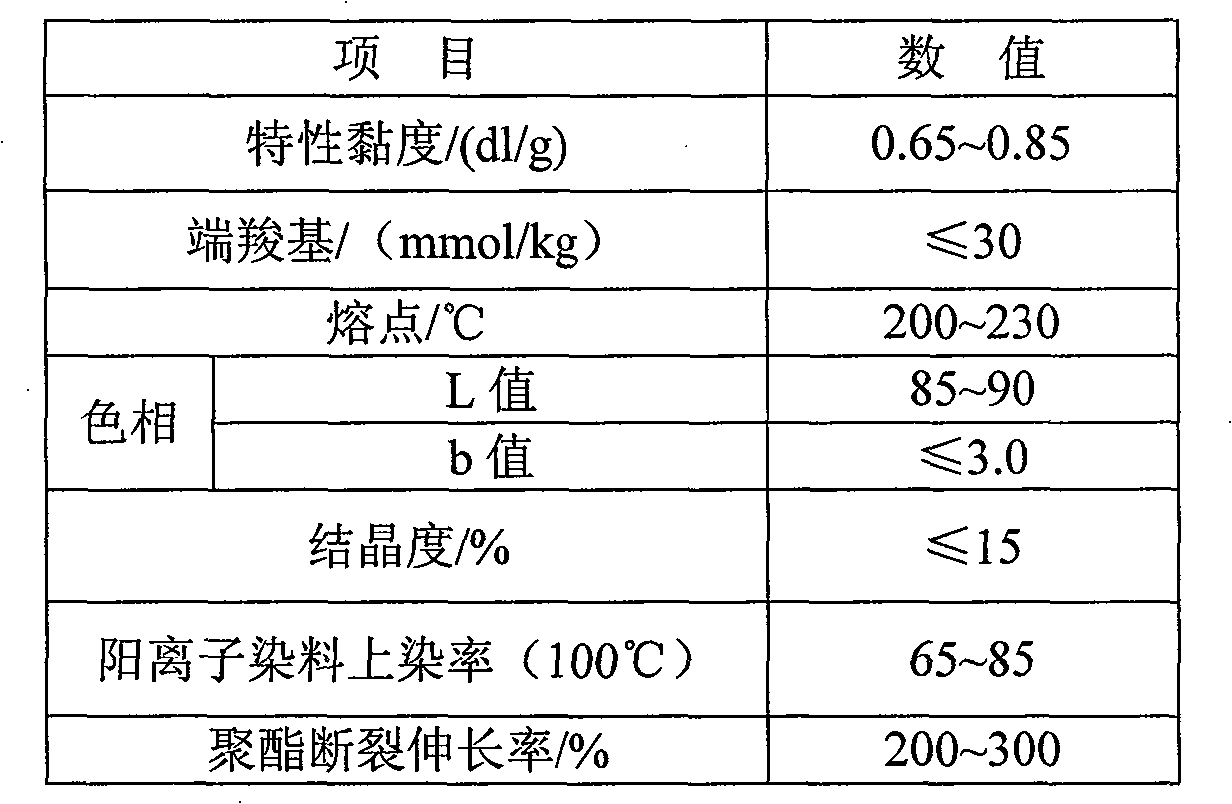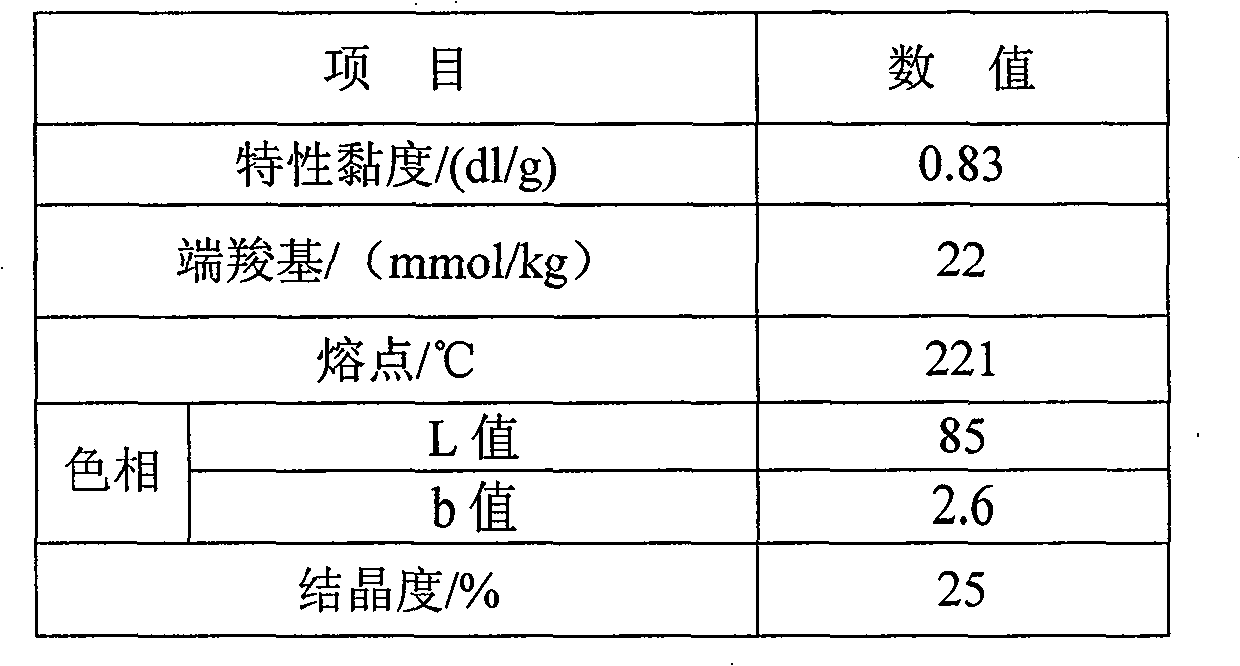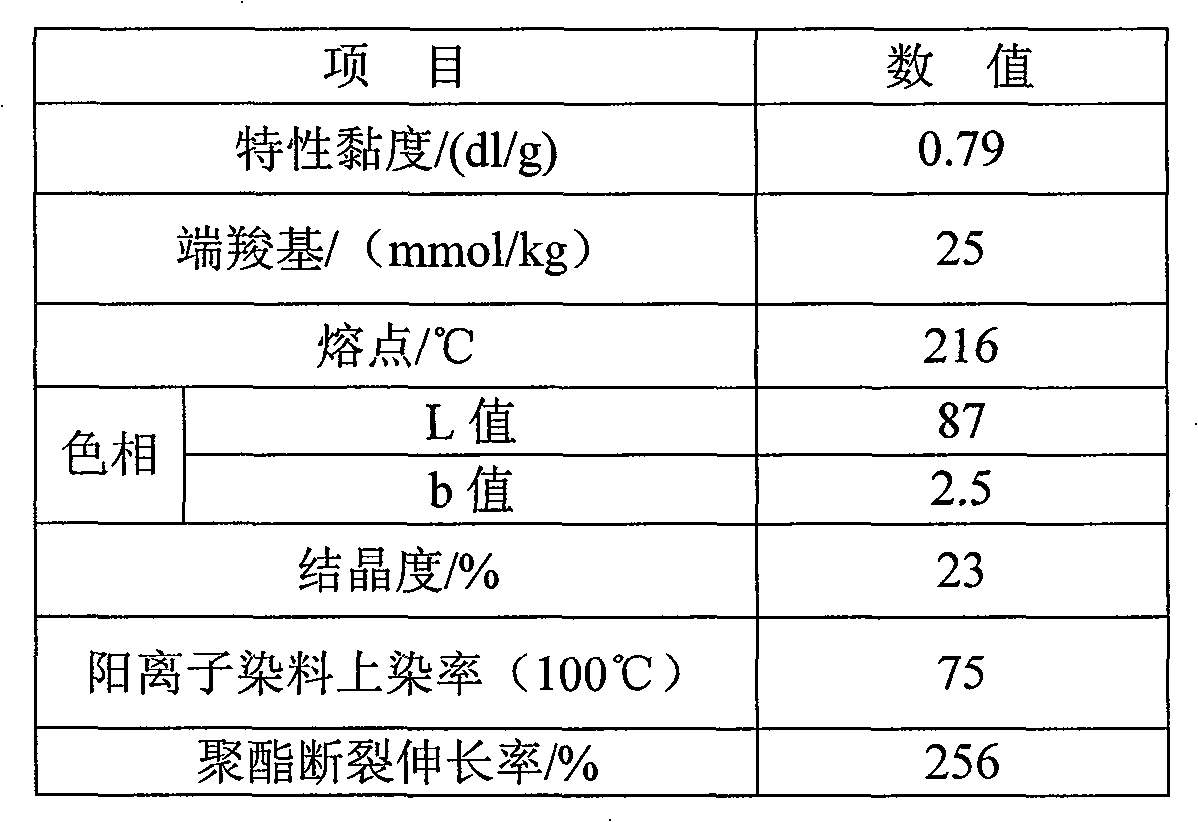Preparation method of 1,3-butanediol modified PBTPET (Polybutylece Terephthalate Polyethylene Terephthalate) copolymer fiber
A technology of copolymerized fibers and butanediol, applied in the manufacture of fire-retardant and flame-retardant filaments, single-component polyester rayon filaments, etc., can solve the problems of easy crystallization, lack of hydrophilic groups, poor dyeing performance, etc. The effect of increasing viscosity
- Summary
- Abstract
- Description
- Claims
- Application Information
AI Technical Summary
Problems solved by technology
Method used
Image
Examples
Embodiment
[0021] Catalyst solution configuration: add the catalyst p-toluenesulfonic acid and stannous chloride to the catalyst configuration tank, inject a small amount of ethylene glycol, stir and heat to dissolve the catalyst in ethylene glycol at 100°C, and the dissolved ethylene glycol catalyst solution Into the dilution tank, inject the remaining ethylene glycol, 1,3-butanediol and butanediol. After stirring, the content of the catalyst is measured to complete the configuration of the catalyst solution.
[0022] Slurry configuration: Add terephthalic acid into the slurry configuration tank according to the material ratio of diol to terephthalic acid at a ratio of 1.10 to 1.15, inject catalyst solution, add stabilizer, matting agent, flame retardant, The etherification inhibitor is stirred and mixed into a slurry, and the prepared slurry is transported to the esterification reaction device.
[0023] The synthesis of the copolymerized fiber adopts a continuous polyester production ...
PUM
| Property | Measurement | Unit |
|---|---|---|
| elongation at break | aaaaa | aaaaa |
| elongation at break | aaaaa | aaaaa |
Abstract
Description
Claims
Application Information
 Login to View More
Login to View More - R&D
- Intellectual Property
- Life Sciences
- Materials
- Tech Scout
- Unparalleled Data Quality
- Higher Quality Content
- 60% Fewer Hallucinations
Browse by: Latest US Patents, China's latest patents, Technical Efficacy Thesaurus, Application Domain, Technology Topic, Popular Technical Reports.
© 2025 PatSnap. All rights reserved.Legal|Privacy policy|Modern Slavery Act Transparency Statement|Sitemap|About US| Contact US: help@patsnap.com



